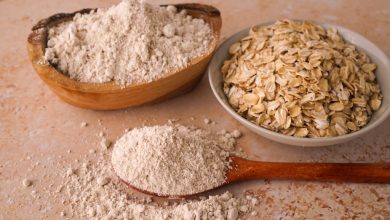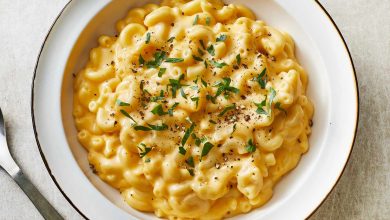McDonald’s Big Mac: Nutritional Information and Ingredients Overview
The Big Mac, a signature sandwich from McDonald’s, is a classic fast-food item known for its distinctive structure—two all-beef patties, special sauce, lettuce, cheese, pickles, and onions, all nestled between a three-part sesame seed bun. Its iconic taste and satisfying flavors make it a popular choice for those seeking a quick meal on the go. Here’s an in-depth look at the nutritional content and ingredients of this beloved sandwich.
Nutritional Information (per serving)
| Nutrient | Amount |
|---|---|
| Energy | 257 kcal |
| Protein | 11.82 g |
| Total Fat | 14.96 g |
| Saturated Fat | 3.803 g |
| Carbohydrates | 20.08 g |
| Fiber | 1.6 g |
| Sugars | 3.97 g |
| Calcium | 116 mg |
| Iron | 2.0 mg |
| Magnesium | 20 mg |
| Phosphorus | 122 mg |
| Potassium | 181 mg |
| Sodium | 460 mg |
| Zinc | 1.91 mg |
| Copper | 0.098 mcg |
| Manganese | 0.206 mg |
| Selenium | 0.0 mcg |
| Vitamin C | 0.4 mg |
| Thiamine (Vitamin B1) | 0.176 mg |
| Riboflavin (Vitamin B2) | 0.209 mg |
| Niacin (Vitamin B3) | 3.384 mg |
| Vitamin B6 | 0.0 mg |
| Folate | 0.0 mcg |
| Vitamin B12 | 0.88 mcg |
| Vitamin A | 0.0 mcg |
| Vitamin E | 0 mg |
| Vitamin D2 | 0.0 mcg |
Ingredients Breakdown
The Big Mac is made with several core ingredients that come together to create its signature taste. These include:
- Beef Patties: 100% beef with no fillers or preservatives.
- Special Sauce: A proprietary sauce, often described as a blend of mayonnaise, ketchup, mustard, relish, and various spices.
- Sesame Seed Buns: Three soft buns with a light dusting of sesame seeds, adding texture and flavor.
- Lettuce: Shredded iceberg lettuce for crunch and freshness.
- Cheese: A slice of American cheese that melts smoothly between the patties.
- Pickles: Sliced pickles that add a tangy and crunchy contrast.
- Onions: Minced onions, which contribute to the sandwich’s savory flavor profile.
Allergen Information
For those with specific dietary concerns, here’s a quick rundown of the potential allergens in a McDonald’s Big Mac:
- Contains: Wheat, Soy, Milk, Eggs
- May Contain: Gluten, Sesame Seeds, Mustard
Please note that the Big Mac is prepared in a facility that handles various allergens, so cross-contamination is possible. Always consult with the restaurant for the most accurate allergen information, especially if you have severe allergies.
Dietary Preferences
The Big Mac is suitable for the following dietary preferences:
- Omnivores: This sandwich is fully meat-based and contains dairy, making it appropriate for omnivores.
- Not suitable for Vegetarians/Vegans: It contains beef patties and cheese, so it does not meet vegetarian or vegan dietary needs.
- Low-Carb and Keto: With 20.08 grams of carbohydrates, the Big Mac may not be suitable for strict low-carb or ketogenic diets.
Health Considerations and Advice
While the Big Mac can be a convenient meal option, it’s important to consider its nutritional content:
- Calories: With 257 kcal per serving, it provides a moderate amount of energy, though it’s not overly high in calories compared to other fast food items. However, frequent consumption may contribute to excess calorie intake.
- Protein: At 11.82 grams of protein, the Big Mac offers a good source of protein, especially when paired with other meals that provide additional nutrients.
- Sodium: With 460 mg of sodium, it’s important to monitor your overall sodium intake, especially for individuals with high blood pressure or heart health concerns.
- Fats: The sandwich contains 14.96 grams of fat, with 3.803 grams of saturated fat, so it’s advisable to balance it with lower-fat options in your diet.
If you’re looking for a quick energy boost and a flavorful meal, the Big Mac serves as a delicious, though indulgent, choice. If you’re aiming for a healthier eating plan, consider moderating your intake and balancing it with fresh fruits, vegetables, and whole grains.
Conclusion
The McDonald’s Big Mac offers a unique combination of flavors, from the juicy beef patties to the creamy special sauce and crispy lettuce. While it can be part of a balanced diet when consumed in moderation, it’s important to be mindful of its calorie and sodium content. Whether you’re indulging in this fast-food classic occasionally or pairing it with a side salad for a more well-rounded meal, the Big Mac continues to be a go-to option for many.
For those looking to explore more delicious meals, keep visiting Love with Recipes for diverse culinary inspiration, including a variety of both indulgent and healthy recipes to suit any preference!










